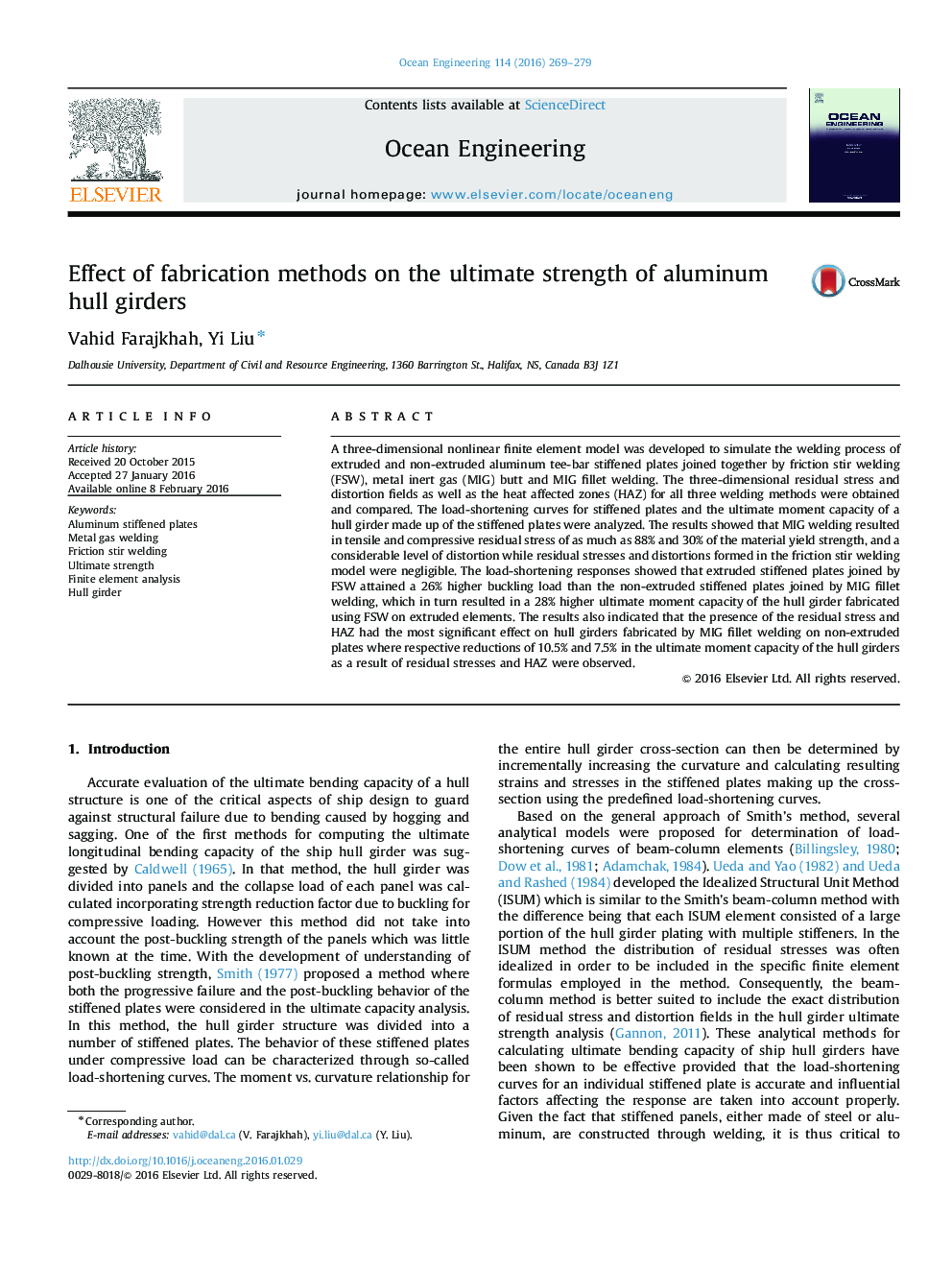| Article ID | Journal | Published Year | Pages | File Type |
|---|---|---|---|---|
| 8064752 | Ocean Engineering | 2016 | 11 Pages |
Abstract
A three-dimensional nonlinear finite element model was developed to simulate the welding process of extruded and non-extruded aluminum tee-bar stiffened plates joined together by friction stir welding (FSW), metal inert gas (MIG) butt and MIG fillet welding. The three-dimensional residual stress and distortion fields as well as the heat affected zones (HAZ) for all three welding methods were obtained and compared. The load-shortening curves for stiffened plates and the ultimate moment capacity of a hull girder made up of the stiffened plates were analyzed. The results showed that MIG welding resulted in tensile and compressive residual stress of as much as 88% and 30% of the material yield strength, and a considerable level of distortion while residual stresses and distortions formed in the friction stir welding model were negligible. The load-shortening responses showed that extruded stiffened plates joined by FSW attained a 26% higher buckling load than the non-extruded stiffened plates joined by MIG fillet welding, which in turn resulted in a 28% higher ultimate moment capacity of the hull girder fabricated using FSW on extruded elements. The results also indicated that the presence of the residual stress and HAZ had the most significant effect on hull girders fabricated by MIG fillet welding on non-extruded plates where respective reductions of 10.5% and 7.5% in the ultimate moment capacity of the hull girders as a result of residual stresses and HAZ were observed.
Related Topics
Physical Sciences and Engineering
Engineering
Ocean Engineering
Authors
Vahid Farajkhah, Yi Liu,
